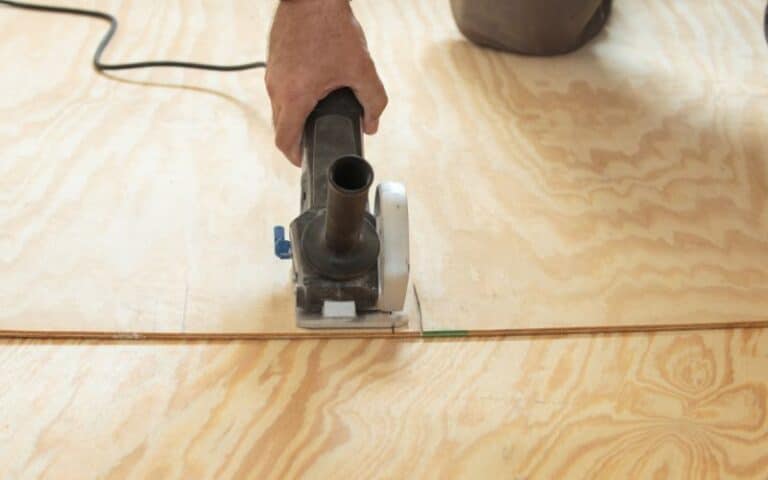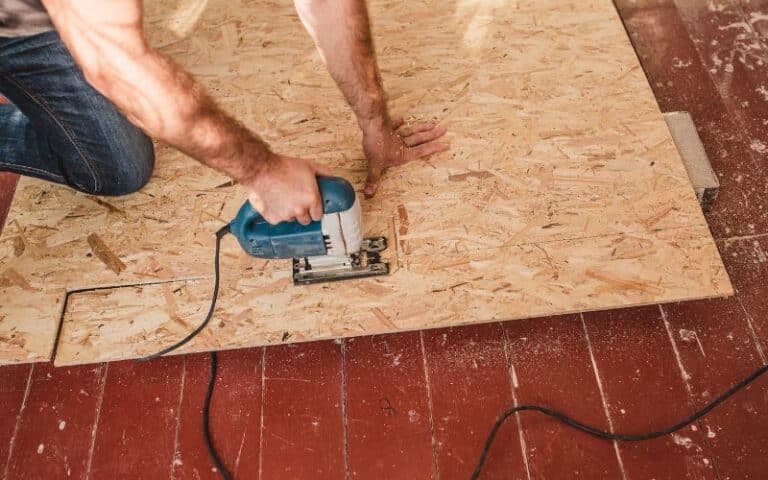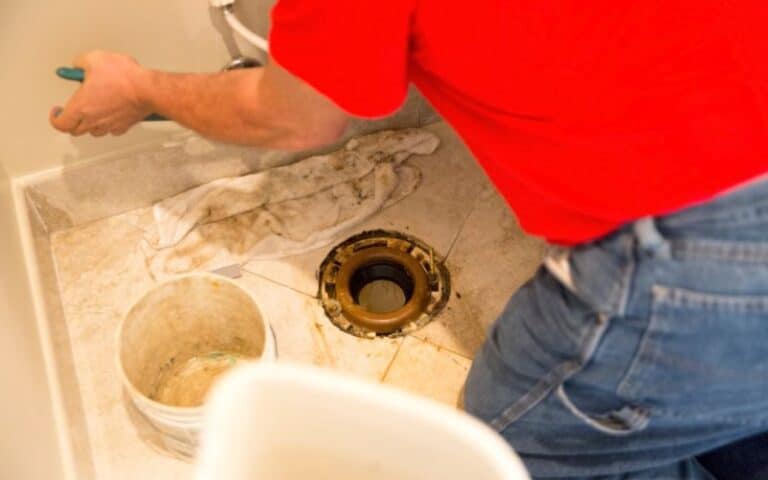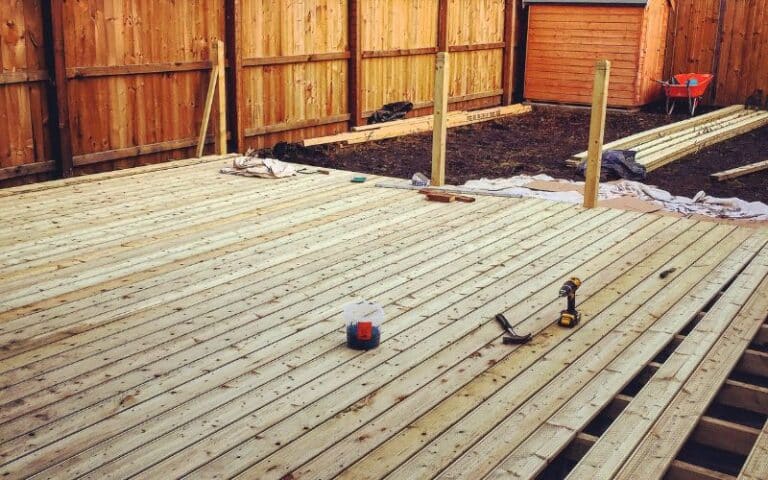You need to drain your water heater at least once a year to clear out sediment so it doesn’t accumulate in your tank.
This routine is especially important if you live in an area with hard water.
Usually, there’s a drain on the floor near the water heater where the flushed water can flow into the plumbing system. But you can drain your water heater even if you don’t have one.
Each water heater has a drain below the tank, find the drain and then attach a hose to the drain. You will then feed the hose into a toilet or a bathtub, or you can put it through a nearby window and drain the water.
Draining a water heater can be messy, but it is necessary at least once a year.
Not having a floor drain can make draining your water heater seem even more tasking, but there are ways you can drain your heater even without a floor drain.
This article highlights those ways to help you do it seamlessly.
Ready for a Flooring Quiz?
5 Ways to Drain Water Heater Without a Floor Drain
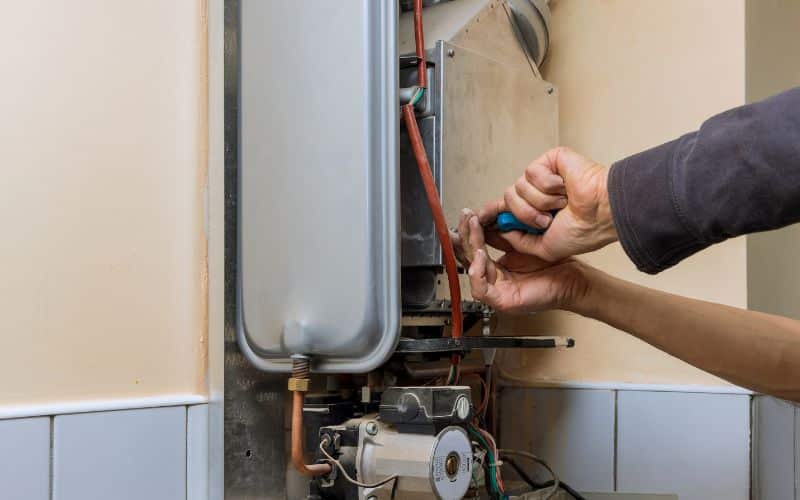
Draining your water heater is a necessary hassle, but you should do it at least once a year. More, especially if you live in a place with hard water and you don’t have a water softener.
Your house should have a floor drain next to the water heater so that it can go into the floor drain and down the plumbing system when you flush water.
But, if your home does not have a floor drain, you’ll have to use other ways to drain the water from the heater without completely flooding your apartment.
#1. Use a Hose
One way you can drain your water heater if you don’t have a floor drain is to use a hose. Connect the hose to the drain at the bottom of the water heater tank and feed it into a bathtub.
You can also feed it into a window if the bathtub is too far away or if the window is closer than the bathtub. But don’t use a bucket or small container as it won’t be large enough.
Alternatively, you can use a sink or a toilet to drain the water. You’re dealing with plenty of water, so you could flood your apartment if you’re not careful enough.
Always remember to turn off the power or gas to the water heater and allow the water in the heater to cool down before you start.
If you use gas, you can turn off the gas to prevent any accidents. But if you use an electric heater, you can switch off the heater.
#2. Use a Siphon
You can use a siphon to remove water from the water heater tank, first turn off the power and allow the water to cool.
Then, connect some tubing to the faucet at the tank’s bottom and insert the other end into a drain or a large bucket.
Hold one end of the tube in the tank and the other in the tub, then quickly move the end in the bucket to a lower position to begin siphoning.
If you do it right, at this point, water should be flowing into the bucket.
#3. Use a Wet or Dry Vacuum
You can also use a wet or dry vacuum to remove the water from the tank; you must first turn off the power and allow the water to cool down.
Then suck the water out of the tank through the faucet at the bottom using the vacuum.
Most homeowners often ignore their heater until it develops a fault; this table below tells you how to know if your heater has issues and the problems it can develop if you don’t drain it.
| Water Heater Faults Due to Lack of Drainage | Signs You Need to Drain Your Water Heater |
|---|---|
| Reduced efficiency | Sediment in the water |
| Damage | Water takes longer to heat |
| Lower capacity | Low water pressure |
Can You Drain the Water Heater Into Your Sink?
If your water heater doesn’t have a floor drain, you can drain the water into your sink if there is one nearby. You have to ensure the sink can drain quickly as there will be a lot of water.
Follow the steps below to drain the water from your water heater tank into your sink.
#1. Check for the Drain
Find the drain at the bottom of the water heater tank; each water heater has a drain at the bottom of the tank. You need to find the drain to attach a hose to it.
When you’ve attached the hose, feed it into a bathtub or a window, whichever is closer.
It would help if you didn’t use a small bucket, especially one since you’re dealing with a large volume of water.
#2. Turn Off the Gas or Unplug the Heater
The water heater uses gas for most homes, so you must take safety precautions to prevent fire hazards.
So to be safe, turn off the power source and turn on the pilot light. If your water heater does not use gas, turn off the power source and unplug the heater before you continue.
#3. Begin to Empty the Water Heater
When everything is in place, open the drain. Even though it says to flush your water heater, you don’t need to empty it to get the desired results.
Sediment usually settles at the bottom of the tank because of its weight, and once the drain opens, the water pushes out the sediment forcefully.
Usually, the tank and the water above should be clean enough. But, if you want to be thorough, you can drain all the water from the tank to be safe.
#4. Open the Pressure Valve
Most water heater tanks have a pressure valve as a precaution; this keeps the water inside the tank if the drain is opened by mistake.
So, before the water starts flowing, you must also open your pressure relief valve.
#5. Check the Water Flow
Remember that you can’t start draining water and leave it to do something else, especially when there’s no floor drain near the water heater.
The water can easily overflow and soak your carpets, your floors or generally flood your apartment, so you’ll have to pay attention the entire time.
You can move between the sink and water heater to ensure the water is draining properly and not causing any damage or flooding anywhere.
#6. Use a Remote Sump Pump
Gravity will assist with a lot of the drainage depending on the location of the water heater and the distance between the sink and the water heater.
However, gravity may let you down, and you’ll need a little extra help to push the water down the hose and into the sink.
You may need a remote sump pump to move the water out from the drain pump to the sink. You can purchase a remote sump pump online or rent one from any hardware store.
But in that case, you will need to use two hose sections. Attach one hose to the sump pump and the water heater drain while the other runs from the sump pump into your sink.
Can You Drain a Water Heater Without Turning it Off?
It is necessary to time off a water heater before draining it; it is very dangerous to drain it while it is still on.
If you do not turn off the power to your water heater before draining it, it could cause much damage. It may burn out all the heating elements on your water heater.
So, if you have an electric water heater, you have to turn off the power from the electrical panel in your home.
But, if you use a gas water heater, you can turn the thermostat on the water heater to pilot. Or you can completely shut off the gas to the water heater.
To avoid any problems, you should check the owner’s manual of your specific water heater and follow the instructions provided.
Also, always allow the water to cool down to room temperature before you drain it. Otherwise, you can injure yourself or damage the water heater.
FAQs
How Long Does It Take for Water to Drain From the Water Tank?
The water should take 20-30 minutes to drain, depending on the water tank size. But you can stop draining when all the water at the bottom has drained.
How Often Do I Need to Drain My Water Heater Tank?
You should drain your water heater tank at least once a year to be safe, but you should drain the tank more often if your home is in an area with hard water.
How Can I Tell When It’s Time for Me to Drain My Water Heater?
When your water heater needs to be drained, it will contain sediments; it will take longer to heat, the water will be lukewarm even after heating, and the water heater will be noisy.

